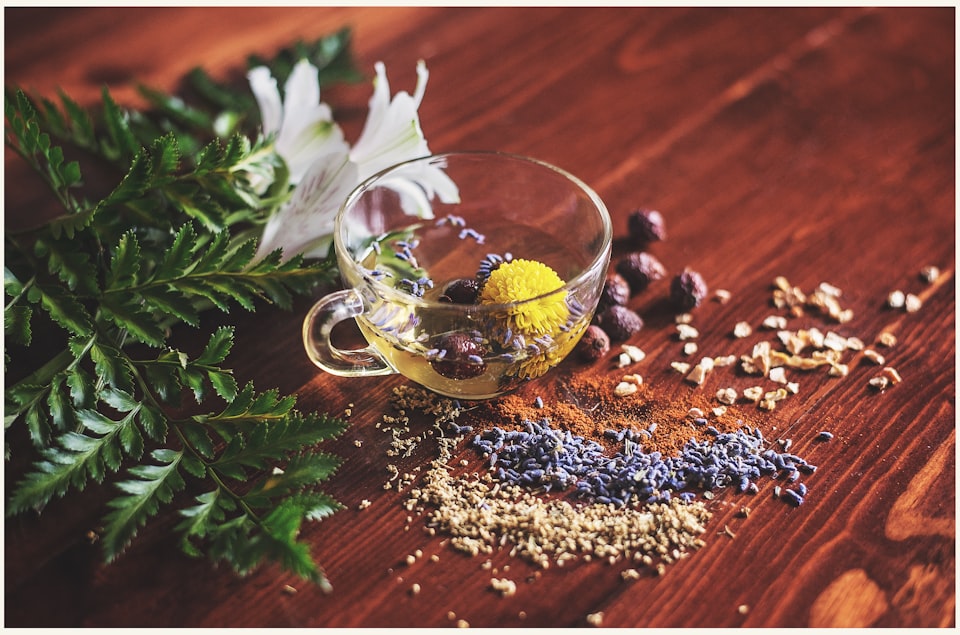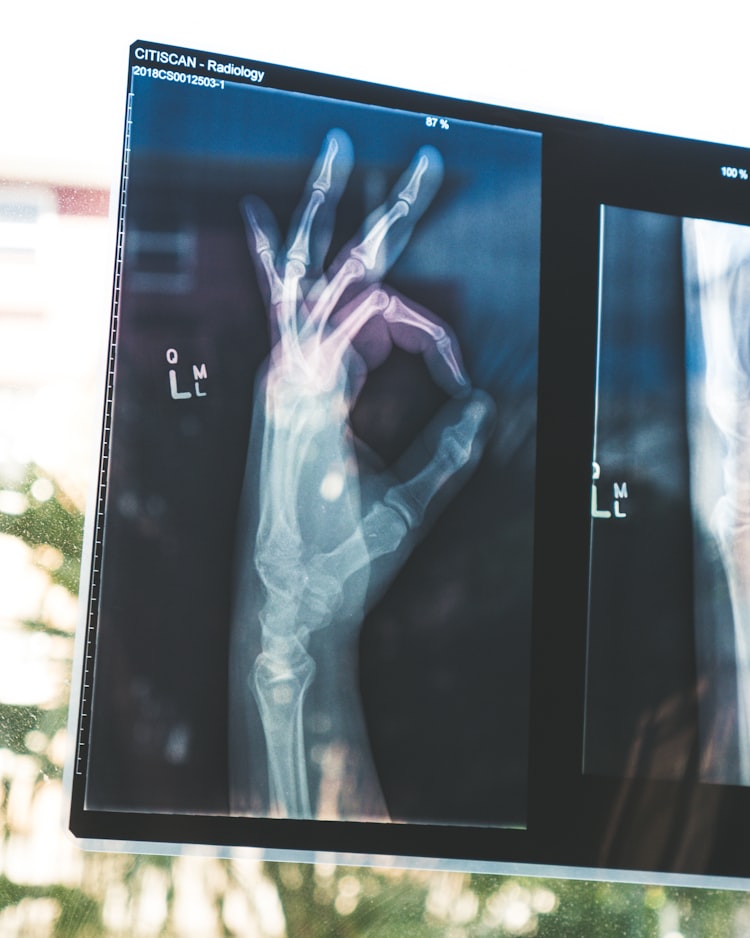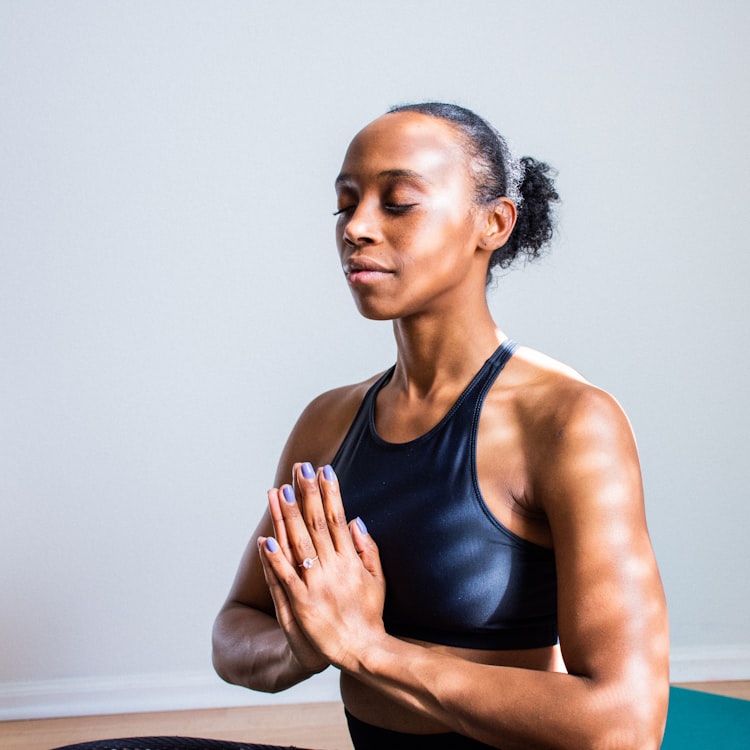An Introduction to Ayurveda

Let's talk about Ayurveda! This is a special topic for me because through Ayurveda I have found healing practices that have brought inner calm, more optimal nutrition, and grounding rituals. So, what is it? Ayurveda is the sister science to Yoga. It is a 5,000-year-old living science and it is a holistic approach to healing and well-being.
In this post, I will share my journey with Ayurveda, an introduction to what Ayurveda is, how you can figure out your unique constitution, daily rituals I have implemented in my life, and some of my favorite books and resources on the topic. Let's dive in!
My Journey Ayurveda
I had taken many Yoga Teacher Trainings at this point in my life. Many great trainings in fact. But all of these trainings only taught me HOW to teach Yoga. They didn't teach me the WHY behind Yoga. I was looking to deepen my understanding of Yoga and I found the studio One Yoga and a phenomenal teacher, Ben Vincent. Ben offers a 9-month Yoga Studies program and I jumped at the opportunity to learn from him. The course was held over one weekend a month for 9 months. Every weekend we dove into new topics that built from the previous sessions. We studied the history of Yoga, we chanted and meditated, we practiced Yoga and of course, we learned about Ayurveda!
We started by taking a quiz to find our unique constitution (more on unique constitutions and doshas below). I use the word quiz loosely here because there are no right or wrong answers, there is no grading and there is no better or worse result. Generally, in this quiz, there are 2 categories of questions: physical and mental. It took only a few minutes to complete and afterward we were left with our unique constitution. After finding our doshas, we took a deeper look at what that meant. Since Ayurveda touches every part of your life so there were many attributes and categories to consider. Some things like food, habits & daily rituals, and the state of being when balanced or imbalanced.
When viewing my results it was clear that I was and am Vata predominate. I am tall with long limbs, I tend to have cold hands and feet, my skin dries easily, I am quick to learn but easily forget, I can become anxious, and am easily excitable. All of these are attributes of a Vata predominance.
When I found this it was like a giant AH-HA! moment. So many things I had just assumed were unrelated problems to tackle were all actually due to an imbalance. To share a bit more, I often experienced itchy skin, I had dry hair, and I would feel the effects of caffeine strongly. I was also doing hot power yoga 5 times a week. I realized how these, and other habits, were all related. The connection made so much sense. And, the best part was I now had all of these tools and practices to bring stability.
What is Ayurveda?
Let's take a closer look at Ayurveda. To understand more about the philosophies behind Ayurveda, check out this post here.
Ayurveda comes from two Sanskrit words and therefore roughly translates to "the science of life". At the foundation, Ayurveda recognizes 5 elements: ether, air, fire, water, and earth. These elements are comprised in everything but generally, 1-2 elements are predominant. The elements are also grouped together in three doshas. Below is just scratching the surface. To learn more about the doshas check out my post here.
- Vata dosha is comprised of ether and air. Think movement, creativity, connection.
- Pitta dosha is comprised of fire and water. Think transformation and intelligence.
- Kapha dosha is comprised of water and earth. Think grounding, stability, comfort.
These doshas can be found everywhere in nature - in the change of the season, in the time of day, in the stage of life for any given person, in plants, activities, everything! Some additional characteristics include:
VATA:
- As it relates to time: winter, the hours of 2-6 am and pm, a person over 50
- As it relates to bodily characteristics: tall, lean, tendency towards dryness
- When balanced: creative, forgiving, excited
- When imbalanced: prone to anxiety, anger, insomnia, fatigue
PITTA:
- As it relates to time: summer, the hours of 10 - 2 am and pm, a person between 16 and 50
- As it relates to bodily characteristics: average build, generally warmer
- When balanced: abundant energy, strong intellect, ability to focus, decisive
- When imbalanced: short-tempered, argumentative, emotional outbursts
KAPHA:
- As it relates to time: spring, the hours of 6-10 am and pm, birth to 16 years old
- As it relates to bodily characteristics: glowing skin, strong build
- When balanced: thoughtful, caring, think mama-bear, filled with joy
- When imbalanced: excess weight, lethargy, depression, resistance to change
These doshas are also present in everyone but the ratio can vary greatly from person to person. Once you find your unique constitution you can then begin to find ways to incorporate balance, healing, and practices for optimal health. This isn't about bringing the other doshas down or up but rather identifying how you can bring balance into your life based on your doshic state. For example, I "score" high in Vata categories; so, I turn to various practices to help ground me and help to slow me down.
Ayurveda also looks at the whole person, rather than just the symptoms, and offers tools to create optimal, holistic health. These tools range from routines to diet to types of physical activity. Generally speaking, there are a few things that are ideal for everyone. Things like: preparing warm, nourishing food, and eating that food at a table (rather than on the go) avoiding ice water, time in movement and meditation, having daily routines that wake the body and senses, and allowing time for rest.
Again, this is just scratching the surface here. It is easy to find your individual constitution and begin a path toward healing. I will be writing future posts dedicated to various aspects of Ayurveda and I will list resources below if you are ready to take a deeper dive. But for now, let's continue with some of the basics.
Finding Your Unique Constitution
How can you find this information for yourself? There are many variations of this quiz that you can find online. I have found this site to be reputable and helpful: Banyan Botanicals. This site does require an email.
Creating Rituals
Figuring out your constitution is just the first step. The following steps are understanding how it all connects to your life and then building rhythms/routines/ rituals that promote a balanced lifestyle. As our 9-month Yoga Studies program progressed we learned more about these daily practices and slowly incorporated them month by month. This slow build helped me carve out the time and made these practices habit. Some of the daily rituals I incorporated were and are based on my unique constitution. It also isn't about being perfect. This is about creating a routine that works for your current state and the amount of time you have. My routine (prior to having a baby - stay tuned for a post on morning rituals with a little one) included the following:
Morning Routine for Waking the Body:
- Wake up slightly before sunrise
- Go to the bathroom
- Oil pull. A process where you swish oil in your mouth for 10-20 minutes. Sesame seed oil is generally ideal for Vata but I prefer coconut oil.
- Tongue scraper
- Brush teeth
- Wash face paying attention to the senses - gently massaging around the eyes, nose, mouth, ears
- Neti pot and finish with nasya oil - daily neti pot is not advised for the Vata dosha so I only do this a few times a week or as needed.
Yoga & Meditation Routine:
- For me this also happens in the morning after completing my time in the bathroom.
- Yoga practice, a minimum of 20 minutes. The practice would vary based on my body of the day.
- Breathwork. This generally included agni sara and kapalabhati (which occurred during my yoga practice) and nadhi shodhana.
- Meditation, a minimum of 10 minutes. I focused on one meditation for at least 40 days before moving to another meditation.
Routine Surrounding Food:
- Removing meat from my diet - the 8 Limbs of Yoga sites ahimsa or non-harming
- Preparing warm nutrient rich whole foods and reducing the amount of cold foods I consumed
- Giving thanks before each meal
- Eating fruit separately as a snack and not with the main meal
- Removing caffeine and focusing on herbal teas
- A yearly spring cleanse
Night Time:
- Diming the lights as the sun goes down
- No screen time past 8pm
- A brief time of reflection
- Winding down with calming breath work
- Washing my face, brushing teeth and emptying my bladder
- Heading to bed around 9pm
Now, did I do these exactly as I spelled out in exactly the same order at exactly the same time every single day... No. But, I did try to create as much consistency as possible with my routines.
I heard this analogy that Ayurveda is like canoeing down the middle of a river. If you are balanced, eating one cold salad in the dead of winter isn't going to lead you into the rocks on the shore. But by neglecting nutrition day after day, abandoning meditation, and not taking care of your body, you will steer yourself right out of alignment and you will crash onto that rocky shoreline.
Resources for Continued Learning
As I mentioned, this post just scratches the surface of Ayurveda. There are many helpful resources out there to continue this understanding. Here are some of my favorite books:
- The Path of Practice: A Woman's Book of Ayurvedic Healing by Maya Tiwari
- Ayurveda: The Science of Self Healing - A Practical Guide by Vasant Lad
- Textbook of Ayurveda by Vasant Lad
- Ayurveda Cooking for Beginners by Laura Plumb





